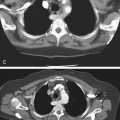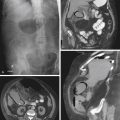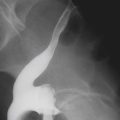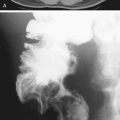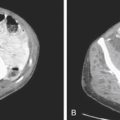CASE 125
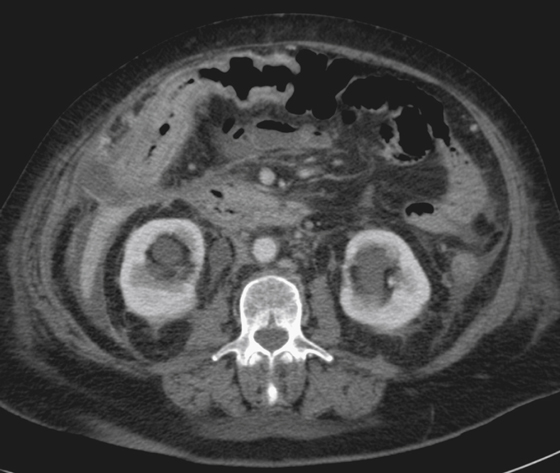
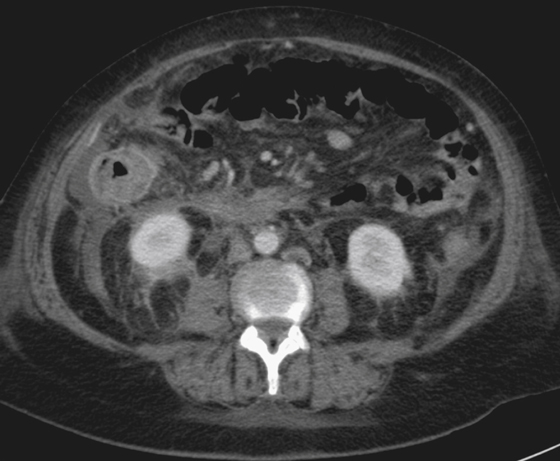
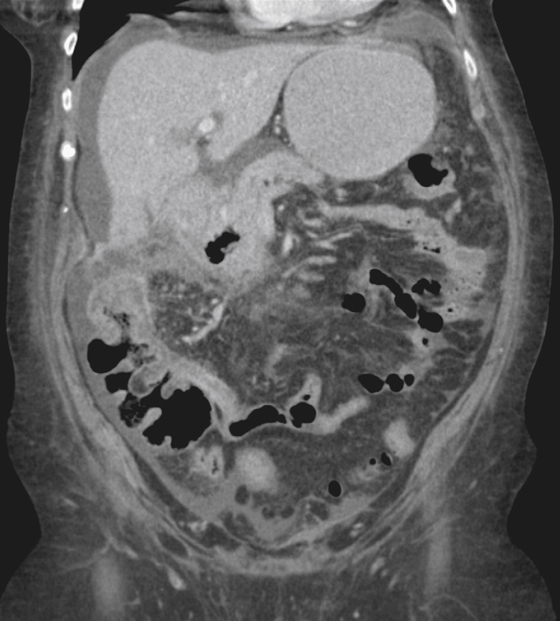
History: A 68-year-old woman presents with right upper quadrant abdominal pain of 4 weeks’ duration associated with nausea and vomiting.
1. What should be included in the differential diagnosis of the imaging finding shown in the figures? (Choose all that apply.)
2. What is the most common origin of hematogenous metastases to the colon?
3. What is the most common site of metastatic disease to the gastrointestinal (GI) tract from a breast cancer primary?
4. Lobular carcinoma is the most common type of breast carcinoma to metastasize to the GI tract. What is the most common morphology of these lesions?
ANSWERS
CASE 125
Metastatic Disease to the Colon
1. A, B, C, and E
2. C
3. B
4. B
References
Cifuentes N, Pickren JW. Metastases from carcinoma of mammary gland: an autopsy study. J Surg Oncol. 1979;11(3):193–205.
Cross-Reference
Gastrointestinal Imaging: THE REQUISITES, 3rd ed, p 290.
Comment
Breast cancer is the most common malignant lesion in women. Metastatic disease is common; most secondary spread involves the bone, liver, lungs, brain, adrenals, and pleural or peritoneal cavities. Metastatic disease can result in serosal invasion of the colon, which is well known. However, a very few spread to the gut directly. The most common site for the direct spread of breast carcinoma is the stomach. It can appear as metastatic masses, sometimes with ulceration giving the “bull’s eye” lesion of the stomach. In other cases, spread can be infiltrative in the stomach, and this is one of the causes of linitis plastica.
Direct spread to the colon is rare. When it does occur, it has the same manifestation as seen in the stomach. There can be one mass or several masses, or the metastasis can manifest as an infiltrative mural process such as in this case. The wall of the cecum is thickened. The infiltrative involvement of the ileocecal valve has resulted in an unusual presentation in this case. The CT images also clearly show the small bowel obstruction that gave rise to this patient’s abdominal complaints.
Most malignant lesions of the breast are of the ductal infiltrative type. A smaller number, 10% to 12%, are lobular carcinomas. Some investigators believe that the lobular types are more likely to metastasize, and the lobular type almost always results in the uncommon direct metastatic spread to sites in the GI tract such as the stomach and colon. Colonic spread is said to occur in more than 5% of breast carcinomas (see figures). However, this number may include serosal spread as well as direct spread. There are several cases in the literature of direct spread to the colon masquerading as primary colon carcinoma.

